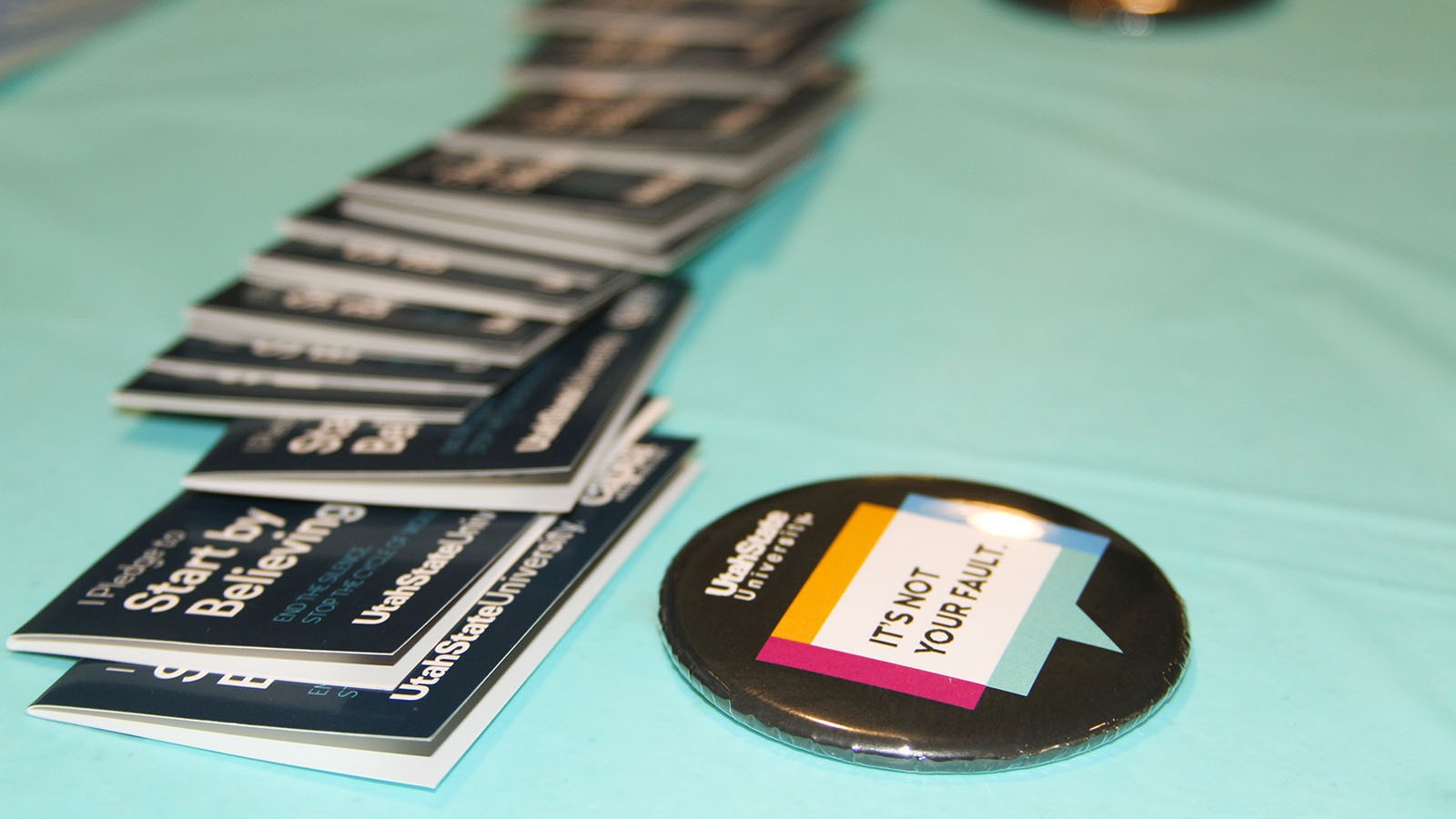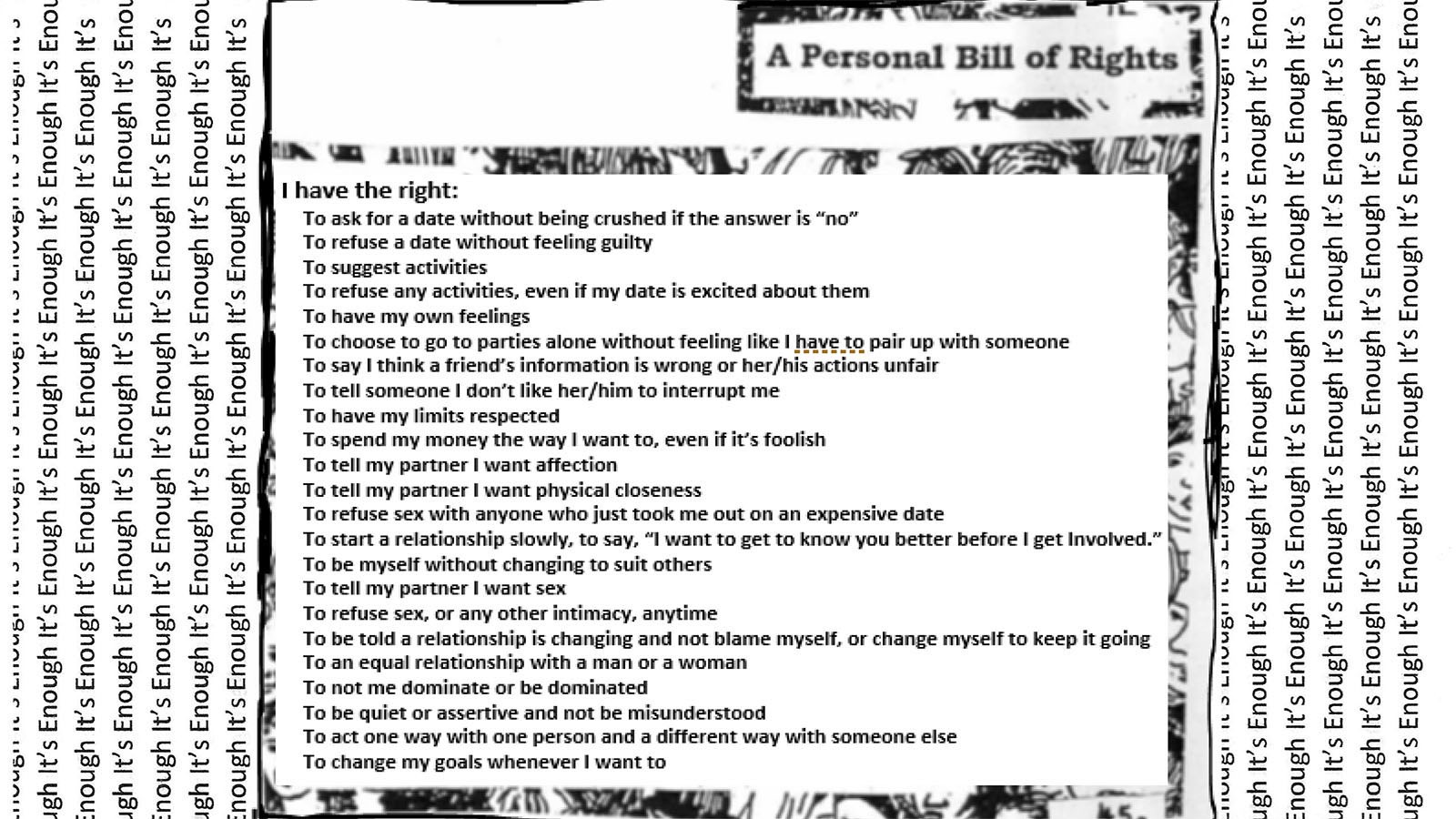Unique Course Collaboration Focuses on Sexual Misconduct Prevention
By Emmalee Fishburn |
Students in Avery Edenfield's technical communication courses have worked on a variety of campaigns to prevent sexual misconduct, including efforts to increase participation in Start by Believing Day.
An unprecedented interdisciplinary collaboration between a faculty member in the USU English department, a former graduate student, the Office of Equity, and the Sexual Assault and Anti-Violence Information (SAAVI) Office resulted in the recent publication of a research brief in Communication Design Quarterly.
The article, “Unlikely Allies in Preventing Sexual Misconduct: Student Led Prevention Efforts in a Technical Communication Classroom,” explores student-designed sexual misconduct prevention efforts taking place in an undergraduate project management course.
“This collaboration was sparked by an article that I wrote in 2019 comparing institutional modes of sexual misconduct prevention to grassroots, peer-to-peer modes in the form of zines, specifically queer zines,” said Avery Edenfield, an assistant professor of rhetoric and technical communication. “As part of that work, I came to understand that technical communicators should become invested in sexual misconduct prevention.”
Edenfield approached Emmalee Fishburn in the Office of Equity and Felicia Gallegos from SAAVI about the possibility of applying what he had learned through his research, and the academic course collaboration was created.
Getting Students Involved
“I was really excited about the idea of collaborating with an entire academic course to create new sexual misconduct prevention efforts for students,” Fishburn said. “There is only so much time in the day, and being able to work with students on these projects has allowed a number of my ‘dream projects’ to be realized.”
The first collaboration took place in the spring of 2020. Students were divided into four groups based on their project interests: research and creation of a consent/sexual violence prevention zine, audit and overhaul of relevant USU webpages, creation of the “It’s Enough” campaign, and creation of materials for the annual “Start by Believing” campaign.
“Students encountered a big challenge with the start of the COVID-19 pandemic while they were working on their projects,” Gallegos said. “But despite those challenges, they were able to produce high quality and creative projects that we’ve been implementing since that semester.
“In particular, the ‘Start by Believing’ campaign group’s efforts resulted in a significant increase in social media interaction for Start by Believing Day compared to previous years,” she noted.
An Uncommon Partnership
The collaboration’s success made Edenfield, Fishburn and Gallegos wonder if similar partnerships were taking place at other institutions. Using funds from the USU Center for Intersectional Gender Studies and Research, they brought in then-graduate student Hailey Judd in the Master of Public Health program to conduct a national survey of prevention professionals addressing that question. It turned out that this academic course and collaboration is rather unique.
“The survey results align with the research about typical sexual misconduct prevention strategies, revealing sexual misconduct prevention efforts at United States colleges and universities are primarily developed and implemented through ‘conventional’ means of design, delivery, and content,” Judd said.
“Most survey participants cited challenges to student involvement in sexual misconduct prevention efforts that focused on logistics, such as recruiting students, feeling students need to be extensively trained, needing additional staff to conduct those trainings, and students being seen as less credible. A collaboration such as this one can be a solution to many of these challenges.”
Building on Experience
Using what they learned from the spring 2020 collaboration and the national survey of prevention professionals, Edenfield, Fishburn and Gallegos adjusted the collaboration for spring 2021 implementation. This time, the course was entirely asynchronous, which brought its own challenges and opportunities.
“In spring 2021, students were working on projects mostly independently, rather than in small groups,” Edenfield said. “So, our approach to coaching the students, providing them with feedback and support, and choosing the projects in the first place had to be different from the previous year.”
Students worked on projects including the development of another consent/sexual violence prevention zine, overhauling a variety of sexual misconduct prevention training slide decks, and creating a social media campaign about consent within marriage and long-term relationships. Fishburn and Gallegos have already started to implement these projects.
“It’s been amazing to see the passion, dedication, and creativity of students through this collaboration the past couple of years,” Gallegos said. “They have produced projects that are allowing us to connect with and educate students in more effective ways.”
Continuing the Partnership
Edenfield, Fishburn and Gallegos are now preparing for the spring 2022 version of the collaboration, and hope that it will be one that is in place for many years to come. For individuals interested in doing a similar kind of collaboration, their research brief includes several recommendations.
“It is often intimidating to try new efforts, especially given the delicacy with which conversations around sexual misconduct must happen,” Fishburn said.
“We encourage prevention professionals to be brave and to utilize the student voices available to them at their institution and to connect with faculty who are willing to provide their students with a program development opportunity that will result in impactful implementation. You never know what amazing things could come from such a collaboration.”
In the future, Fishburn and Gallegos hope to establish a similar collaboration with other academic departments at USU, especially in areas that are not often utilized in the development of sexual violence prevention efforts – such as STEM or business – to provide better insight into the needs of untapped student populations and produce a greater impact.
Students have produced zines about sexual misconduct awareness and prevention.
WRITER
Emmalee Fishburn
Prevention Specialist
Office of Equity
435-797-0346
emmalee.fishburn@usu.edu
CONTACT
Felicia Gallegos
Outreach and Prevention Coordinator
Sexual Assault and Anti-Violence Office
felicia.gallegos@usu.edu
TOPICS
Sexual Misconduct Prevention 77storiesComments and questions regarding this article may be directed to the contact person listed on this page.









